Share
Discover 5 proven strategies to streamline your small business cash flow before EOFY 2025. From tax optimisation to invoice financing solutions.
The final weeks before June 30 can feel like a financial pressure cooker for small business owners. Between BAS payments, superannuation contributions, and unexpected expenses, it’s no wonder that only half of Australian small businesses maintain positive cash flow in any given month. Even more concerning, research shows that 87% of SMEs miss valuable business opportunities simply because they lack immediate access to funding.
With high interest rates, inflationary pressures, and tight margins continuing to challenge Australian businesses in 2025, strategic cash flow management has never been more critical. The end of financial year isn’t just about compliance and tax obligations - it’s your opportunity to position your business for strength and growth in the year ahead.
Smart cash flow strategies implemented before June 30 can transform your business’s financial position, turning potential stress into competitive advantage. Whether you’re dealing with seasonal fluctuations, late-paying customers, or simply wanting to optimise your tax position, these five proven strategies will help you streamline your business cash flow and enter the new financial year with confidence.
Optimise your tax position with smart deductions
The weeks leading up to EOFY present unique opportunities to improve your tax position while boosting immediate cash flow. Strategic timing of deductions and expenses can significantly impact both your current year tax liability and your working capital position.
Maximise your instant asset write-off opportunities
The instant asset write-off threshold remains at $20,000 per asset until June 30, 2026, providing small businesses with powerful cash flow management opportunities. If you’ve been planning equipment purchases, bringing them forward before EOFY allows you to claim the full deduction this financial year while accessing the business benefits immediately.
This strategy works particularly well for:
- Essential business computers and technology equipment
- Machinery and tools that improve operational efficiency
- Commercial vehicles for business operations
- Office furniture and fixtures under the threshold
The key is ensuring the asset is not only purchased but also installed and ready for use before June 30. A $15,000 piece of equipment purchased in June could reduce your tax liability by $4,500 (assuming a 30% tax rate), while providing immediate operational benefits to your business.
Pre-pay eligible expenses strategically
Businesses with aggregated turnover under $10 million can claim tax deductions for eligible expenses paid up to 12 months in advance. Pre-paying these common business expenses offers immediate tax benefits:
- Commercial rent and property leases
- Business insurance premiums
- Interest payments on business loans
- Software subscriptions and licensing fees
- Professional membership dues and subscriptions
Pre-paying these expenses before EOFY reduces your current year taxable income while improving cash flow planning for the year ahead. The strategy requires careful cash flow analysis to ensure pre-payments don’t create immediate liquidity issues. However, when planned properly, this approach can reduce tax obligations while providing budget certainty for the coming year.
Plan for the superannuation guarantee increase
From July 1, 2025, the Superannuation Guarantee rate increases to its final planned level of 12%. This change applies to wages paid on or after July 1, regardless of when the work was performed. Ensure your payroll systems and cash flow forecasting account for this increase, as it will directly impact your labour costs and working capital requirements.
Strategic timing of income and expenses
If your business operates on a cash basis and cash flow allows, delaying some invoice processing until after July 1 can reduce your current year taxable income. Conversely, bringing forward eligible expenses or making additional superannuation contributions can provide immediate tax benefits while supporting long-term business goals.
Accelerate invoice collection and recovery
Outstanding invoices represent cash that’s technically yours but unavailable when you need it most. With payment terms often extending 30, 60, or even 90 days, unpaid invoices can create significant working capital challenges, particularly during EOFY when expenses typically spike.
Implement proactive collection strategies
Don’t wait for invoices to become overdue before taking action. Implement a systematic follow-up process that begins before payment due dates:
- Send friendly payment reminders 7-10 days before due dates
- Follow up with phone calls for high-value invoices
- Use progressively firmer communications for overdue accounts
- Maintain detailed records of all collection attempts
- Set specific days each week for accounts receivable follow-up
Many successful small businesses report that simply picking up the phone and having a conversation with clients about payment timelines resolves most collection issues. Often, delays aren’t intentional - your invoice might be sitting in someone’s approval queue or waiting for a signature. A quick call can expedite payment and maintain positive customer relationships.
Offer early payment incentives
Small discounts for early payment can significantly improve cash flow while maintaining customer goodwill. Effective early payment strategies include:
- 2-3% discount for payment within 7-10 days
- Tiered discount structure based on payment speed
- Special terms for repeat customers or large orders
- Clear communication of discount terms on all invoices
- Automated systems to apply discounts accurately
Structure these incentives carefully to ensure they improve rather than harm your margins. The discount should be meaningful enough to motivate early payment but not so large that it erodes profitability.
Write off bad debts before EOFY
If you have invoices that are genuinely unlikely to be collected, writing them off before June 30 can provide tax benefits while cleaning up your accounts receivable. Ensure you document your collection efforts and confirm the debts were previously reported as income.
This strategy not only provides tax benefits but also gives you a clearer picture of your actual financial position heading into the new year.
Leverage technology for efficient collection
Modern accounting software can automate much of the invoice follow-up process while providing better visibility into payment patterns:
- Automated payment reminder emails
- Integration with online payment platforms
- Real-time payment status tracking
- Customer payment history analysis
- Mobile access for on-the-go account management
Integration with payment platforms can also make it easier for customers to pay quickly, reducing collection times and improving the overall customer experience.
Real-world impact: One small business reduced their average collection time from 45 days to 28 days simply by implementing automated payment reminders and offering online payment options, improving their monthly cash flow by over $30,000.
Strategic management of payables and inventory
While accelerating receivables improves cash inflow, managing payables and inventory strategically can significantly impact cash retention. The goal isn’t to damage supplier relationships but to optimise payment timing for maximum cash flow benefit.
Optimise supplier payment terms
Review your payment terms with suppliers and ensure you’re taking full advantage of available payment periods. Key strategies include:
- Taking full advantage of 30-day payment terms without paying early
- Negotiating extended terms with reliable supplier relationships
- Scheduling payments for optimal cash flow timing
- Avoiding early payments unless meaningful discounts are offered
- Maintaining clear communication about payment schedules
Every day you retain cash in your business account is a day it can earn interest or be deployed for growth opportunities. However, maintain strong supplier relationships by communicating clearly about payment schedules and honouring agreed terms consistently.
Liquidate slow-moving inventory
EOFY presents an ideal opportunity to convert stagnant inventory into cash through strategic clearance activities:
- Identify stock sitting for more than 90 days
- Implement aggressive pricing for clearance items
- Bundle slow-moving items with popular products
- Offer staff incentives for clearing old stock
- Partner with other businesses for cross-promotional opportunities
The $10.5 billion in projected EOFY sales for 2025 demonstrates strong consumer appetite for deals during this period. Even selling at cost or slight loss often proves more beneficial than carrying inventory costs and tying up working capital.
Negotiate strategic payment deferrals
If cash flow is particularly tight approaching EOFY, communicate proactively with key suppliers about temporary payment deferrals. Many suppliers prefer early communication about potential delays rather than discovering late payments after the fact.
Frame these conversations around maintaining long-term partnerships rather than short-term difficulties. Often, suppliers will work with valuable customers to adjust payment schedules, particularly if you can provide clear timelines for normalising payments.
Balance cash preservation with operational needs
While conserving cash is important, ensure your cost-cutting doesn’t impact operational efficiency or customer service. The goal is optimising cash flow, not creating operational problems that could affect revenue generation.
Build a comprehensive 12-month cash flow forecast
Moving beyond reactive cash flow management requires building robust forecasting capabilities that anticipate challenges and opportunities throughout the coming financial year. Effective forecasting transforms cash flow from a source of stress into a strategic advantage.
Implement monthly cash flow forecasting
Develop detailed monthly cash flow projections for the next 12 months, incorporating all known variables:
- Seasonal patterns based on historical data
- Known major expenses and tax obligations
- Realistic revenue estimates with scenario planning
- Equipment replacement and maintenance schedules
- Annual subscriptions and insurance renewals
Use historical data from the past 2-3 years to identify patterns in your business cash flow. Most businesses experience predictable seasonal variations that can be planned for once properly understood.
Account for known variables and scenarios
Include all known major expenses in your forecast while preparing for different business outcomes:
- Annual insurance premiums and professional fees
- Equipment replacements and major maintenance
- Tax obligations and superannuation increases
- Planned investments and growth initiatives
- Best-case, worst-case, and most-likely revenue scenarios
This scenario planning helps identify how various business outcomes would affect cash flow and what corrective actions might be necessary.
Leverage technology for accuracy
Modern accounting software can integrate historical data with forward-looking projections, automatically updating forecasts as actual results become available. This integration reduces manual work while improving forecast accuracy over time.
Many Australian banks now offer cash flow forecasting tools that integrate with business banking data, providing real-time insights into cash position and trends.
Review and adjust regularly
Cash flow forecasting isn’t a set-and-forget activity. Review and update your projections monthly, comparing actual results with forecasts to improve future accuracy. This regular review process helps identify trends early and adjust strategies accordingly.
Use forecast variations as learning opportunities. If revenue consistently exceeds or falls short of projections, investigate the underlying causes and adjust your forecasting methodology.
Plan for working capital requirements
Use forecasting to identify periods when additional working capital might be needed and arrange financing in advance. It’s much easier to secure funding when you don’t desperately need it than when cash flow has become critical.
Forward planning also allows you to choose the most cost-effective financing options rather than accepting whatever’s available during cash crunches.
Explore strategic finance solutions for working capital
When organic cash flow management isn’t sufficient to meet your business needs, strategic financing can provide the working capital necessary to capture opportunities and manage growth. Modern financing solutions offer much more flexibility than traditional business loans.
Invoice financing for immediate cash access
Invoice financing allows you to access up to 80% of your outstanding invoice value within 24-48 hours, providing immediate working capital without waiting for customer payments. Key benefits include:
- Funding grows automatically with your sales volume
- Interest only charged on funds actually drawn
- Repayment occurs naturally when customers pay
- No property security typically required
- Integration with accounting software for streamlined management
This solution is particularly valuable for businesses with reliable customers but extended payment terms. Modern invoice financing platforms integrate directly with accounting software like Xero and MYOB, streamlining the application and management process.
Asset finance for equipment investments
Rather than depleting cash reserves for equipment purchases, asset finance allows you to spread costs over time while preserving working capital. This approach is particularly valuable when equipment purchases qualify for instant asset write-offs, providing immediate tax benefits while maintaining cash flow.
Asset finance can cover vehicles, machinery, technology, or other business equipment, with terms typically ranging from 1-7 years depending on the asset type and business requirements.
Alternative lending solutions
Traditional banks often struggle to understand small business cash flow needs, particularly for businesses with seasonal variations or temporary challenges. Alternative lenders offer several advantages:
- Evaluation based on overall business performance
- Faster approval processes (often within hours)
- More flexible lending criteria
- Better understanding of small business challenges
- Solutions available when traditional banks decline
These lenders typically evaluate businesses holistically rather than focusing on single financial metrics, making them more accessible for growing businesses or those with temporary cash flow challenges.
Business lines of credit for flexibility
A business line of credit provides ongoing access to funds up to an approved limit, with interest only charged on amounts actually used. This flexibility makes lines of credit ideal for managing seasonal variations or taking advantage of unexpected opportunities.
Unlike term loans, lines of credit can be drawn upon and repaid repeatedly, providing ongoing financial flexibility for dynamic business needs.
Choosing the right financing solution
The best financing solution depends on your specific business circumstances and needs:
- Short-term cash flow gaps: Invoice financing or business lines of credit
- Equipment purchases: Asset finance to preserve working capital
- Seasonal variations: Flexible lines of credit with variable draw-down
- Growth investments: Term loans or asset finance with longer repayment periods
- Working capital boost: Invoice financing or unsecured business loans
Work with financial advisers or accountants who understand small business needs to evaluate options and structure financing that supports rather than constrains your business growth.
Taking action before June 30
Effective cash flow management requires proactive planning rather than reactive responses to financial pressures. The strategies outlined above work best when implemented systematically rather than as emergency measures.
Start by conducting a comprehensive review of your current financial position and implementing these action steps:
- Assess your current cash position and outstanding receivables
- Identify upcoming EOFY obligations and payment deadlines
- Prioritise strategies based on potential impact and implementation ease
- Set specific deadlines for each strategy implementation
- Monitor progress weekly and adjust approaches as needed
Remember that cash flow management is an ongoing process, not a one-time fix. The systems and strategies you implement before this EOFY will serve your business throughout the coming year and beyond.
The businesses that thrive in challenging economic conditions are those that proactively manage cash flow, anticipate challenges, and position themselves to capture opportunities when they arise. By implementing these five strategies before June 30, you’re not just managing the immediate EOFY period - you’re building the financial foundation for sustained business success.
Don’t wait until the last minute to address cash flow challenges. The most effective strategies require time to implement and show results. Start today, and give your business the financial advantage it deserves heading into the new financial year.
Further questions
What is the instant asset write-off threshold for EOFY 2025?
How quickly can I access funds through invoice financing in Australia?
What expenses can I pre-pay before EOFY to reduce taxable income?
How can I improve my invoice collection times before EOFY?
What's the difference between cash flow forecasting and budgeting for small businesses?
This is general information only and is subject to change at any given time. Your complete financial situation will need to be assessed before acceptance of any proposal or product.





